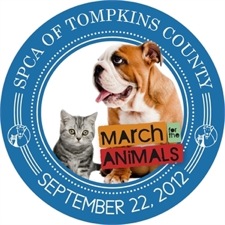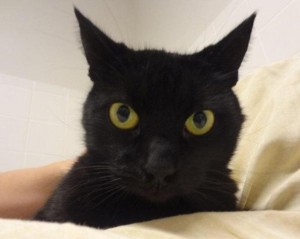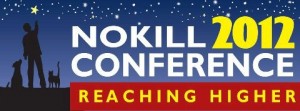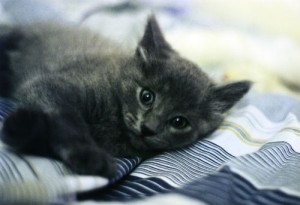Next year, the No Kill Advocacy Center, No Kill Nation and Sagacity Productions will release a feature-length documentary about animal sheltering and the No Kill movement. At last year’s No Kill Conference, I was interviewed for this documentary. We saw this trailer as part of the closing remarks of this year’s Conference. The trailer begins with Henry Bergh, founder of the once-great ASPCA and then moves to the contemporary No Kill movement, telling the story through interviews with various players in this unfolding movement. You’ll see some familiar faces–Nathan Winograd, Ryan Clinton, Mitch Schneider, Ellen Jefferson, Bonney Brown–and some you’ve never seen before, but who made all the difference in the world.
Nathan Winograd literally wrote the book on the No Kill movement, created the first No Kill community in the country, has called out more liars and killing apologists than anyone else and is the acknowledged leader of the movement. Ryan Clinton led the fight for No Kill in Austin, one which had to defeat the ASPCA, which supported continued killing. Mitch Schneider’s approach to animal control is a key component to Washoe County, Nevada’s success. Dr. Ellen Jefferson’s organization Austin Pets Alive! has used a systematic and ever-improving approach to saving as many pets as possible, crucial to Austin’s success, and Bonney Brown turned the Nevada Humane Society around with turbocharged adoptions, volunteers and innovative programs. All of these individuals have shared their considerable knowledge and skill with others and inspired them to work towards No Kill communities of their own, creating a ripple effect that keeps on expanding exponentially.
All of their stories are compelling, but the one closest to my heart is one told by some people you’ve never seen before, one whose names you don’t know, the core group of volunteers who never gave up no matter what the shelter staff and board dished out. I owe a personal debt of gratitude to all of them that I could never repay if I had 10 lifetimes in which to try. It is because of them that a shelter so shamelessly steeped in the killing mentality that it had sunk to the depths of killing a volunteer’s foster kittens rather than picking up the phone was transformed into something beyond our wildest dreams. It is because of them that my personal despair at the killing of two nameless kittens I’d cared for for a month became part of a much larger story, and an inspiring one.
There is nothing more meaningless than meaningless death, and there is nothing more meaningful than stopping it.
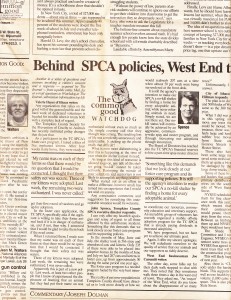
Editorial in the Ithaca Journal about the shelter’s killing of my foster kittens. August 8, 2000. Click to enlarge.
We were an engineer, a retired school teacher, a librarian, an archivist, a newscaster, a lab technician, a veterinarian, a retired secretary, a few grad students, a paralegal, an Army reservist, a couple of future veterinarians, a Schutzhund enthusiast, and more. I look back and marvel at how badly we were treated despite the considerable skills we collectively possessed and everything we had to offer. Shelter killing makes for some insane situations, and a disregard for basic human decency is one of them. I also marvel at how what looked like small acts of kindness–tiny pebbles, perhaps noticed by only a privileged few at the time–have had their own ripple effect, affecting people far away and years later, long after the moment had passed. Anyone who has seen a shelter’s transformation will have their own collection of moments of compassion and turning points. They’ll know who the heroes, both sung and unsung are, and the villains too.
What if Brian Gold, and Bob Wise and Dr. Claudia Haferkamp-Wise hadn’t organized that first volunteer meeting? What if they and Allison Myers didn’t persistently talk sense to the Board? What if we didn’t have a foster program or offsite adoptions? What if we didn’t have Lorna, Pam, Sara, Nathaniel, Dana, Jason, Amy, Melissa, Joan, Joy, Marcia, Erica, Laurel and all the rest? What if someone even crazier than we were didn’t get hired as the new Executive Director? I’d hate to think what would have happened. Everyone should have a team that good. The animals and all of us deserve no less.
You’ll meet a few of these people in this video, but not everyone. As of now, there are 52 documented No Kill communities in the country, and an unknown number making varying degrees of progress towards that goal. By my calculations, that’s a lot of unsung heroes, and a great many inspiring stories.
How many animals’ lives have been saved in these communities? How many people have had their lives bettered by adopting a pet? How many lost pets were returned to their families? How many people had their lives enriched by a positive volunteer experience? How many idealistic new shelter employees got to keep their idealism, and their jobs? How many tragedies didn’t happen?
In 2000, there was not a single No Kill community in the country, and then on June 11, 2001, there was one, and the rest, up til now, is history. In August 2000, an ordinary bunch of volunteers at a shelter no one in their right mind would have pegged as the first place to end shelter killing, got together and wouldn’t take ‘no’ for an answer. We had no idea what the future held, just a determination that it would be better than what it was, and a certain clarity of vision that the way things were was utterly unacceptable.
That we could end the killing, and right away, never occurred to me. It came as a complete surprise.
When we first got together in the Wise’s living room all those years ago, we were just a bunch of people who wanted to save dogs and cats and bunnies and to be treated like human beings while doing so. Little did we know that was tantamount to fomenting revolution. We truly do live in a cruel, crazy beautiful world.
When the shelter sincerely committed to the animals and the community, when it removed the obstacles to success that it had created, there was a foster home for every litter of kittens, every injured dog, every animal in need. There were businesses that rallied to the support of the new attitude at the shelter. There were even wealthy benefactors who donated to build a new state-of-the art shelter. What may have at first seemed like a leap of faith into a yawning abyss turned out to simply be a lot of hard work with a lot of people pitching in to do their part.
We now know that the future holds genuine shelters for animals, places that serve the communities as they should, but before that, many more unsung heroes, a great many inspiring stories, and a huge amount of hard work (which is actually a lot easier than having your soul destroyed).
“It was like the sun had been behind a cloud for years, and it came out…” Bob Wise’s words at the conclusion of the trailer bring back the wonder and pain of that struggle.
May your team be as steadfast as ours was. May you be ten times as smart and a thousand times as informed. May your victory be swift, and your success beyond your imaginings.

Today the Tompkins County SPCA is a safe haven for animals. It was the first No Kill community in the country. Will you make yours one of the next?
The trailer is now available to be shared far and wide, so please do so.
Here’s the link: The No Kill Revolution in America
Share it with your friends. Write a short cover email to accompany it, and send it to your local government officials, your legislators, media, business people, celebrities–anyone who makes things happen needs to see this.
Other resources:
No Kill 101
Dollars & Sense
Whoever destroys a soul, it is considered as if he destroyed an entire world. And whoever saves a life, it is considered as if he saved an entire world. ~Talmud
